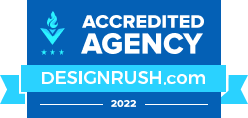Clarity on stakeholder roles emerges as pivotal in crafting a robust blueprint for client-agency collaboration. A diverse array of personnel, from account managers to creatives, may be key players at various project stages. However, not every team member must engage constantly; their involvement hinges upon the task’s specific demands and scope.
Establishing designated points of contact plus efficient communication channels helps streamline processes, mitigating delays while fostering purposeful engagement with appropriately chosen participants across different segments of an endeavor.
Understanding Expectations on Both Sides
We must grasp what clients and agencies expect from each other. They all need clarity: who takes part in a project and when they step in matters a lot. For instance, CEOs want to join that talk if we’re making a brand’s image; small details like watermark choices won’t concern them as much.
We’ve got to lay out expectations right away; what results are we after? How will teams behave or stick to the plan? These guide creativity and work direction well but can wreck things if shared poorly or not at all.
Make sure everyone knows their roles upfront because misunderstandings lead nowhere fast. We end up with goals missed just because nobody knew about them! Regularly checking on these expectations keeps us aligned. Clear, honest communication throughout provides better creative freedom for our team while keeping client relations smooth.
Establishing Clear Communication Channels
We set up clear lines for talking to ensure our clients stay in the loop. Every project kicks off with a meeting where both sides lay out needs and goals. This way, each party knows what’s expected right from day one.
We keep these channels open at all times to avoid mix-ups or missed details that can throw us off track. Regular progress updates help, too; they give everyone a chance to catch issues early on or tweak plans as needed. It isn’t just about giving updates, though; it’s also critical that we listen closely, fully grasp client concerns, and respond thoughtfully.
It takes more than nodding along; you’ve got to understand their perspective so you can offer spot-on solutions that truly align with their vision. In this ever-changing market landscape, staying aligned also means frequent goal check-ins.
Setting Realistic Goals Together
Setting clear goals is crucial for success. Here’s how we do it: breaking big aims into small tasks. Use tools like ClickUp Goals to set real targets each week or month.
Each goal must be clear so everyone knows their part in our larger plan. Now, smartly managing resources can make or break us. Our team evaluates budgets and workloads regularly, making sure not a dollar or hour goes wasted.
Good agency project management isn’t just about keeping projects on track; it means adapting when things change fast and ensuring quality every step of the way without fail. Remember this: successful campaigns come from well-planned increments that allow constant adjustment to meet evolving client needs efficiently.
Defining Roles and Responsibilities
We’ve seen the rise of social media shift how companies engage with audiences. With this fast change, agencies like ours step in to offer specialized skills. When we define roles and responsibilities for a project, be it short or long-term, we start by setting up transparent communication channels.
Team meetings happen often; we set spaces just for discussing our tasks so everyone is clear on what they have to do. We lay out sharp and reachable goals while making sure these aims fit into each organization’s bigger plan. At every stage, trust matters most. It’s built when teams meet their targets without fail, showing that all involved can rely on one another’s work ethic.
Transparency means no secrets are kept: from resource availability to progress updates, everything is laid bare. Such openness not only nurtures trust but also steers us away from scandals that could ruin partnerships completely. So yes, defining who does what also involves committing honestly to those duties, a true base upon which successful collaborations stand firm.
The Importance of Trust Building
Trust is key to great work. It starts with shared goals; you must fully understand your client’s needs and marketing aims. This means knowing their audience, the customer journey, and the core messages they aim to send out into the world.
When things get unclear, it’s your job as a leader to stay calm and adaptable. Showing you can handle uncertainty reassures clients that you’re on their side for every twist in our campaign story. It’s about real-time problem-solving, too, addressing snags not just at the project end or during reviews but instantly.
Keep feedback loops quick and active so both teams know we’re on track together. With all this ready—open dialogue, understanding of objectives—you’ll be set up for success from day one without waiting around!
Creating a Collaborative Workflow
Start with splitting tasks smartly. People want to team up; it matters to them a lot, and almost 75% say so. Yet confusion kills that drive when everyone’s roles are fuzzy or overlap too much.
Your job includes ensuring teams know their parts, their duties, and limits for a smooth workflow. If work piles unfairly on someone, tackle it head-on by redistributing the load using tools like Teamwork.com’s reports, which show who can handle more. Good collaboration tech is also key—not just task trackers but also communication enhancers in our project management system that unite us quickly, showing what’s happening at any time via chat or dashboard glimpses without juggling many apps.
Clear leadership rules from day one keep heads cool and decision-making swift. We need leaders aligned with established guidelines over clashing egos fighting for control. Documenting our learnings is crucial. Handbooks detailing workflows, document storage paths, final goals, and insights from all sides make this shared wisdom pool flourish over time.
Ongoing Performance Evaluation Strategies
When working with agencies, keep a keen eye on the team you get. It’s easy to be wowed by big talk at pitches; what matters is who’ll roll up their sleeves for your account daily. Looking beyond glossy agency-wide stats or tales of growth from $20 million to $50 million in revenue without clear strategy insights could signal trouble.
If that growth isn’t there, dig deeper before signing anything. Don’t just chase an agency’s name fame; ensure their crew can deliver real-deal strategies tailored just right for you. Tactical help may suffice if your marketing ace has things locked down tight but misses out on bigger-picture moves and watches gaps widen, needing strategic minds guiding the charge.
True partnership blooms when meticulous selection meets steady collaboration, with feedback loops kept wide open via modern communication tools. This ensures that all stakeholders move forward together, built on mutual trust and deep understanding, ready for whatever comes next.
Adapting to Project Evolution
Every sale counts in adapting to project evolution. Markets shift, and tech changes. So, a playbook guides us; it’s our north star in this dance of sales strategy and client rapport building.
We start by diving deep into market trends; we can’t ignore them. Staying current means leveraging tools like data analytics to recognize shifts that could affect customer choices or open new doors for engagement. Then there’s understanding what the buyer faces: what keeps them up at night, and what are their daily hurdles?
It isn’t just about price anymore. Our experience tells us they crave innovation, too, which aligns with recent IDC findings: Innovation draws customers more than cost issues do. Next is showcasing value specific to each persona within our clients’ teams because generic pitches fall flat nowadays—60% won’t even listen if it doesn’t feel meant for ’em! And ROI isn’t one-size-fits-all either; its impact varies across roles inside organizations.
Finally, asking impactful questions matters, and having those hooks ready helps seal the deal by striking chords with potential buyers’ deepest needs while setting us apart from everyone else, knocking on their door, and offering similar solutions without such fine-tuning. So yes, evolving projects demand an evolved approach, one where personalization leads, and clear evidence of unique benefits follows right behind it.
Working with clients requires a clear plan. This blueprint ensures smooth teamwork between agencies and their partners. Trust, open lines of communication, and setting shared goals form the foundation for success.
Regular meetings keep everyone on course, while flexibility allows for creative solutions to challenges that arise during projects. Agencies should guide but also listen, adapting strategies as needed to meet client objectives effectively. This approach fosters a strong partnership, leading to remarkable outcomes.









